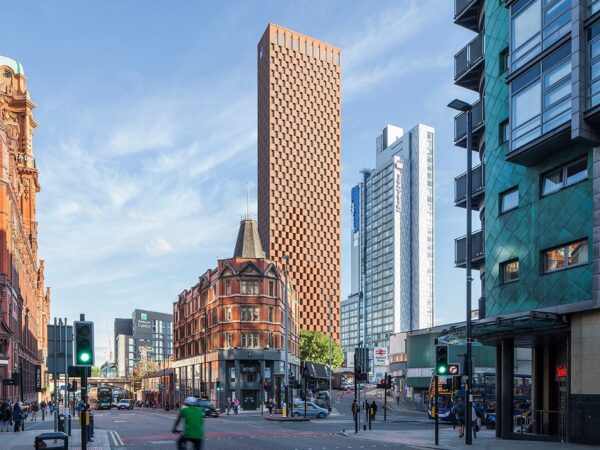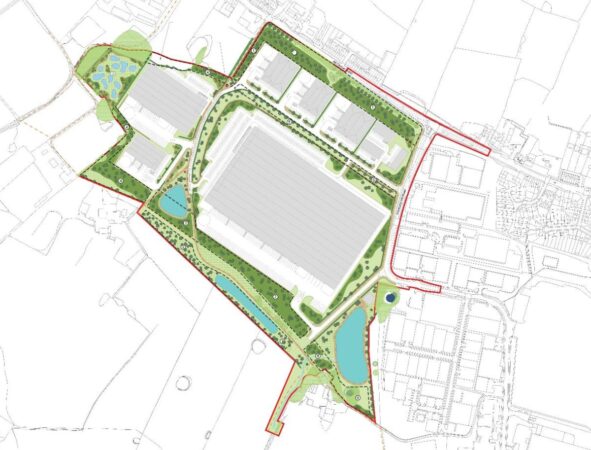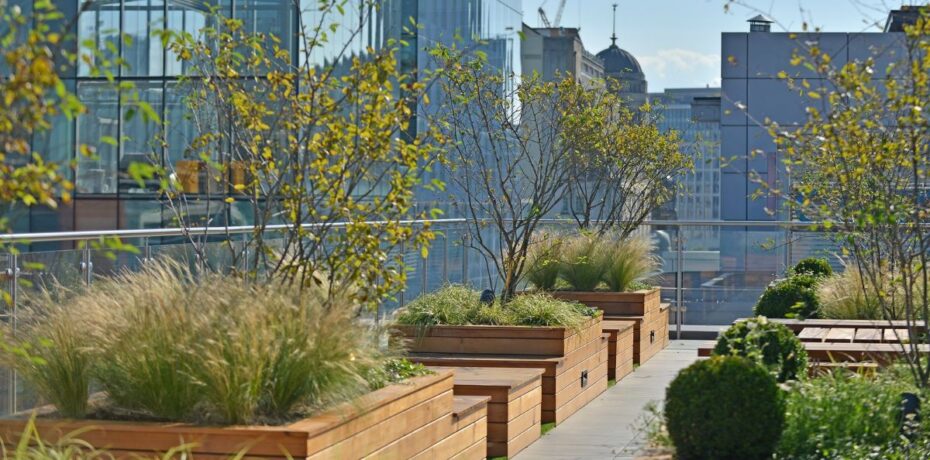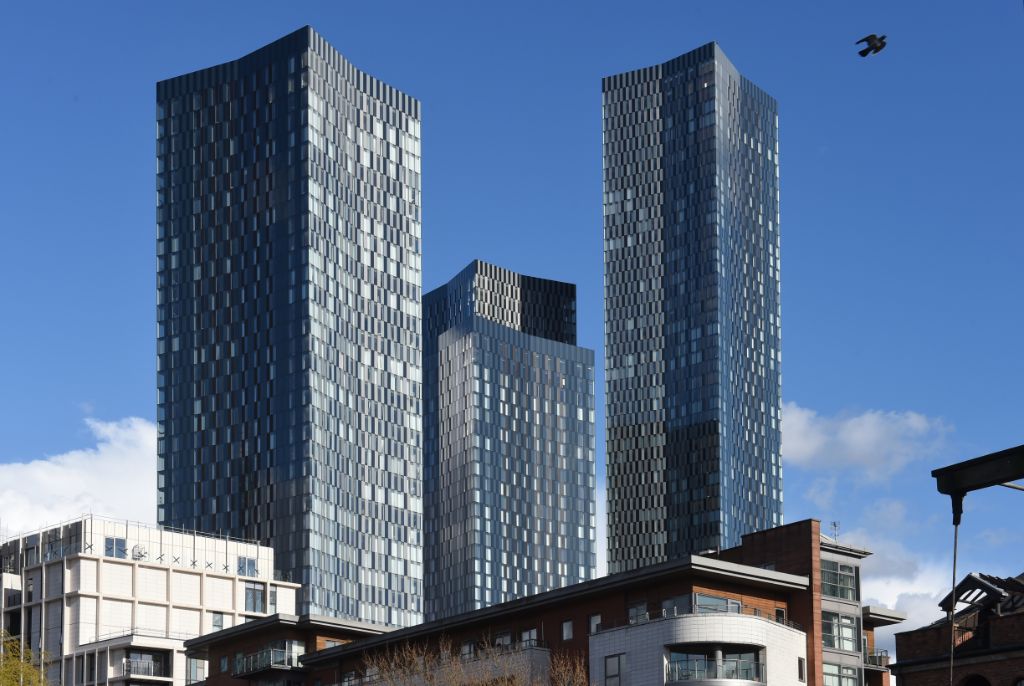The Subplot
The Subplot | Well buildings, king cash, Green Belt
Welcome to The Subplot, your regular slice of commentary on the North West business and property market from Place North West.
THIS WEEK
- Feel-good factor: wellness in the workplace is going to be unaffordable for many landlords
- Good king cash: investors have rediscovered reliable low-risk income, and that is good news
- The Green Belt psycho-drama explained

THE FEEL-GOOD FACTOR
The real cost of wellness
Meaningless yoga babble or the most serious issue in property? The UK’s first WELL Gold office refurbishment is Manchester’s Bauhaus, Quay Street. But there is a price to be paid for being on-trend. Subplot tots it up.
Orchard Street Investment Management’s 50,800 sq ft Bauhaus office block at Quay Street has become the UK’s first refurbished building to be awarded WELL Gold status. So far only three buildings in the UK – refurbished or not – have won the accreditation. For owner Orchard Street, endorsement by the International WELL Building Institute, a sustainability and wellness certifier, is a landmark. But how much did it cost?
The question
Orchard Street bought Bauhaus in 2013, paying £16m in a deal with Blackrock, Place North West reported. A £5m refurbishment has now been completed. Untangling the wellness elements from the broader amenity-led refurb is a tricky business. Orchard Street had already factored in the cost of things like the roof terrace providing space for cycling and showering facilities and the inevitable Pilates classes.
No toxic furniture
The additional elements are largely unseen: improved air quality, a fancy system to monitor humidity and carbon dioxide levels, water filtering, a certain amount of required public art (to enhance moods) and some investment in lighting. There’s also the cost of choosing the right soft-furnishings in the co-working and social areas. In this case, right means sofas that are absolutely guaranteed not to leech volatile organic compounds (VOCs).
The bill
The uplift in costs required, above and beyond what Orchard Street would have done anyway, was small – maybe 2% of the refurbishment budget. But of course they were already replacing a lot of costly plant and machinery, so the cost looks unusually small. In fact, so small that it could have got lost in the usual assumptions about contract variations which might allow, reluctantly and with much resistance, as much as 5% leeway. Industry sources say a cost uplift more like 15% might be required in some trickier buildings or sectors.
Getting your money back
Tracing the direct link between investment in wellness and rents (and hence values) is more or less impossible. “Do tenants pay the new rent because it is a nice refurbishment, or because of the wellness criteria? Working that out is our ongoing challenge,” confesses Sarah O’Connell, asset manager at Orchard Street Investment Management. That said, we can do some back-of-the-envelope maths.
Rents go up
Before the refurbishment, Bauhaus passing rents were topping out at about £25/sq ft. Today the quoting rent is £35/sq ft. On anybody’s terms that is a substantial uplift. If you make some brutal assumptions – top rents achieved throughout, incentives minimised, void periods brief, gross yield just about 5% – the result is a building now likely to be worth north of £30m (possibly quite a bit north). On the old passing rents, with the same assumptions, you might have been looking at something approaching £25m. Give yourself a bit of wiggle room on those numbers and you’d have to conclude that the £5m spent on the refurbishment paid for itself, whilst extending the life and appeal of the asset. The tiddly 2% extra on refurbishment costs (about £100,000) that secured the top-level wellness badge barely comes into it.
Less tangible
But the real benefit of the wellness shtick might not lie in these numbers at all. Orchard Street has mitigated a lot of potential regulatory risks by taking its refurbishment a few steps further than was strictly necessary. That could save it some money, and improve the asset’s lifetime value. And if tenants like wellness, and they seem to, it might mean the building lets more quickly, thus saving on the many and various costs of a void period. Today occupancy is 16%, but if two deals in progress conclude next month it will soon be all but fully let.
Here comes the but
The difficulty is that while the sums add up in go-getting rent-rising Manchester, the sums probably won’t add up in Preston or Chester or even Liverpool. That’s because not everybody can expect a rental uplift from £25 to £35/sq ft following refurbishment. If the scale of rental growth is slender and the capital values modest, big refurbs make little sense. And remember it was the scale of the Orchard Street refurb which made the wellness agenda relatively easy to meet – seriously expensive M&E was already being replaced. “Yes, it’s challenging if you are looking at more marginal markets. So if we’d been looking at rents rising from £25 to £27, then maybe you have to work to justify changing your plant earlier, and you can’t achieve the WELL certification without a new plant,” says Orchard Streets’ Sarah O’Connell.
And the other but
Then there’s the sustainability agenda. The issue here is that going green, and meeting wellness criteria, are sometimes (often?) in conflict. Better air quality, lighting and water systems might push up operational emissions. The well-certification bodies and the World Green Building Council are working together to align their codes, but we’re not there yet. For conscientious landlords like Orchard Street this is a headache and a worry.
This matters because
The property industry isn’t doing such a grand job on sustainability, anyway. The concentration on superficial gimmicks (green walls, bees on the roof) distracts from the funny maths involved in a lot of net-zero carbon calculations. So much is excluded from so many of these calculations, you wonder if they are worth anything. See the Urban Land Institute and PwC’s Emerging Trends in Real Estate Global 2021 report for more on this.
Does their head in
Occupiers are confused, too. In Knight Frank’s latest ESG-focussed research only 19% said sustainability considerations would be the key influence on real estate choices over the next three years. According to the World Green Building Council, around 40% of global carbon emissions come from real estate, yet over a quarter of occupiers (27%) thought their company’s commitment to net zero would have little impact on their real estate choices and a further 15% thought it would have no impact at all. They are probably right, which makes it a bit grim.
Getting better
Investors are changing how they think. “We look at every decision we make and ask if there is a chance to significantly upgrade energy performance or achieve net-zero carbon, because we think this protects investment value against climate change risk. That is quite a market change in our industry. I don’t think many people were thinking like this even 12 months ago,” says O’Connell.
Conclusion: The maths of wellness are daunting. It could end up a play-thing for affluent property markets. But its success or failure reflects wider changes in the way investors think about sustainability.
DRIVING THE WEEK
 News flash: it’s all about income
News flash: it’s all about income
A new report, and venture, both point to the same (potentially long-term) change in the property industry: investors have rediscovered low-risk income. This light-bulb moment could mean a surge of investment in the North West’s student housing and build-to-rent.
Investec Real Estate has published its second Future Living report, Beds for rent: A golden age. The report updates earlier thinking from the first survey in 2019. It shows how the pandemic spurred global investors to pivot towards UK “beds for rent” – student housing, co-living, build-to-rent.
What it says
Investec asked its PR consultancy to speak to 52 global institutional investors representing £514bn assets under management for the report. All but eight of those questioned said they planned to increase, or maintain, funding allocation for the “beds for rent” cluster of housing types. All but a handful said the most attractive options in the UK were outside London. For comparison, barely half showed the same kind of enthusiasm for office property.
Snouts in the trough
“Four legs good, two legs bad,” the Trotskyist pig Snowball announced early in Animal Farm. Investec is not Trotskyist (we assume), but even so it has bought into Snowball’s way of thinking. It goes like this: if your tenant-base has many legs, is broad and diverse and if, on the whole, you can quickly replace tenants that default or disappear, then you have a good solid income stream that stands on four, or maybe four thousand, tenant legs. The more legs the better, because legs equal stability. Build-to-rent and student housing are therefore rated as preferable to having one or two big tenants who might go bust, leaving you with nothing and a hole that’s too big to replace quickly, which is more often than not the way the office market works.
Safety first
In the ever-revolving lexicon of property bullshit, this is called ‘granularity’ and is given high marks. At the same time and for the same safety-first reasons, investors have started downplaying capital growth and preferring risk-controlled income growth. Landlords in all sectors are suddenly realising what they ought to have known, which is that a building is only worth as much as the people in it can afford to pay. The failure to focus on the risk involved in the link between who pays the rent and escalating capital value is now looking like one of the gravest stupidities of the last few decades.
Hiding in plain sight
Although they wouldn’t put it half so brutally, the point is conceded by property industry luminaries like Matthew Hopkinson and Matthew Richardson. Last week the two Matthews launched Income Analytics, a business aimed at resolving this information gap. They have already secured backing from MSCI and Savills. “Over the last 30 years, about 70% of the performance of property comes out of the income… and is the least volatile part of your return. The value of bricks and mortar is only a function of its use, yet weirdly we’ve focused on the capital value, not the quality of the cash flow,” says Richardson, who thinks Covid has concentrated investors’ minds on what matters. If you doubt this, spend a few minutes with a shopping centre landlord.
At last
The Investec research suggests this lesson is now sinking in. It also showed, anecdotally, what gives investors pause for thought. They worry their new enthusiasm for income-generating granular assets will be screwed up by politicians (40%-plus think regulatory issues may limit growth) and by developers / vendors selling beds-for-rent assets at silly prices that make the yields unattractive (about half agree). Investec claims this pro-income change of sentiment is permanent, and that the bad old ways have been foresworn. Two-thirds of investors agreed.
You’ll like this
You have to read this kind of research with care (see Subplot, 22 June 2021). A cynic might say the update on the 2019 report amounts to nothing more than Investec saying “look, aren’t we clever for spotting this two years ago.” A serious data-cruncher might wonder how much reliance you can place on small self-reported samples and online surveys. All true. But the trend is clear: investors have now worked out that income stability is what matters most, and that much of that income will come from places like the North West. That is excellent news for the economy and the region’s property market.
IN CASE YOU MISSED IT…
 Green Belt up
Green Belt up
The Ministry of Housing, Communities & Local Government has cleared the final hurdle to development of Tritax Symmetry’s plans for 1.4m sq ft of warehousing at Wigan and Harworth’s plans for 1.1m sq ft at Wingates Bolton. It reveals some curious thinking about Green Belt.
A year ago ministers assumed the right to decide a batch of North West warehouse requirements totalling more than 4m sq ft. As Subplot reported earlier this year, the delay, combined with the sense that the government was giving in to the worst kind of Nimbyism, drove developers mad. Now the ministry has handed down approvals after a costly 12 months of doubt and anxiety.
Speak not thy name
The formal paperwork shows how far the words “Green Belt” have come to work like a charm, or spell, the kind that leaves people a bit mad. In the case of Wingates, the problem boiled down to an issue about cross-referencing. Nobody seems to have any doubt that Bolton Council meant to allow this kind of development but because the magic words had been uttered the plans had to be escalated to ministerial level. In the Tritax case, a year of delay was required for inspectors to conclude that although the scheme was in Green Belt, it left Wigan and Ashton distinct, thus achieving the Green Belt policy’s aim even if it used a little of the Green Belt’s land. This piece of common sense took a year to emerge.
Confused
It is far too easy to blame the planning system for things that are not its fault. So long as the Great British Public want contradictory things (they want their Amazon goodies tomorrow, but don’t want to look at warehouses), planning is going to be the place where the nation’s psychodrama is played out. As any therapist would tell you, in this kind of situation what’s needed most is clarity of thinking. Alas, Green Belt is absolutely mired in unclarity. It is too often confused with greenfield (which is quite different, and much broader); the public hears one and thinks the other, and politicians pander to this. The sooner some other, more useful, words are found the better for everyone’s peace of mind.
The Subplot is brought to you in association with Cratus and Bruntwood Works.





